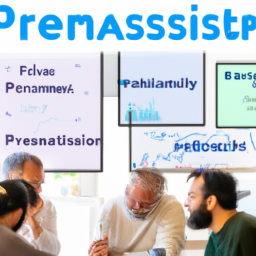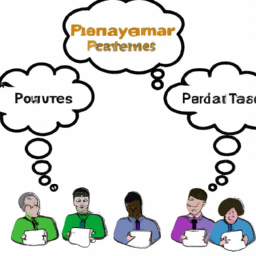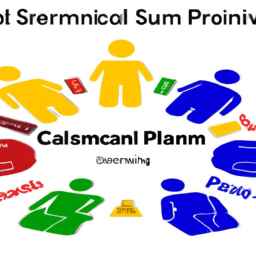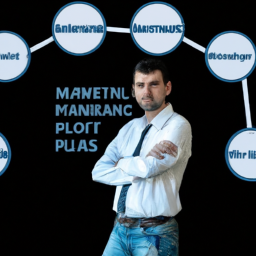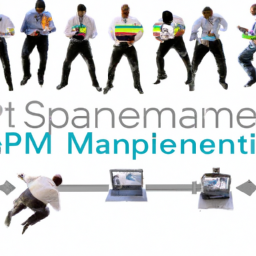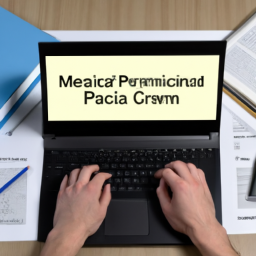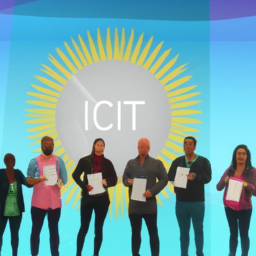Are you ready to become an Agile guru? Look no further than the PSM II exam – the roadmap to mastering Agile methodologies.
This comprehensive certification will equip you with the key concepts and principles of Agile, empowering you to navigate complex projects with ease.
In this article, we will guide you through the process of understanding, preparing, and acing the PSM II exam.
Get ready to elevate your Agile skills and take your career to new heights.
Key Takeaways
- Familiarize yourself with the Scrum Guide and have a solid understanding of roles, events, artifacts, and values described in it.
- Take practice tests and join study groups or online communities to assess knowledge, identify areas for improvement, and gain valuable insights and support.
- Master agile practices and techniques by familiarizing yourself with methodologies like Scrum, Kanban, and Lean, and incorporating them into project management for agility, adaptability, and continuous learning.
- Engage in discussions, share resources, and analyze different perspectives to deepen understanding and prepare for the practical application of agile methodologies in the exam and future career.
Understanding the PSM II Exam
Understanding the PSM II Exam can be challenging, but it’s crucial for anyone aspiring to become an Agile guru.
The exam format consists of multiple-choice questions and is conducted online. It tests your knowledge and understanding of advanced Scrum principles and practices.
To pass the exam, you must score at least 85% within a time limit of 90 minutes. The scoring criteria are based on your ability to apply Scrum principles in real-world scenarios. Each question is assigned a different weightage, and the difficulty level varies.
It’s important to thoroughly understand the Scrum Guide and have practical experience in implementing Scrum.
To prepare for the exam, study the Scrum Guide, take practice tests, and participate in Agile workshops or training sessions.
Key Concepts and Principles of Agile
You should familiarize yourself with the key concepts and principles of Agile. Agile is not just a methodology; it is a mindset that emphasizes collaboration, adaptability, and continuous improvement.
The agile mindset encourages individuals and teams to embrace change, respond quickly to customer feedback, and deliver value in small increments.
One of the core principles of Agile is the use of cross-functional teams. These teams consist of individuals with different skills and expertise, working together to achieve a common goal. By bringing together diverse perspectives and capabilities, cross-functional teams can problem-solve more effectively and deliver high-quality results.
Understanding and applying these key concepts and principles will enable you to effectively navigate and succeed in an agile environment.
Preparing for the PSM II Exam
Before taking the PSM II exam, it’s important to adequately prepare. This exam is designed to test your knowledge and understanding of advanced agile concepts and principles. To help you prepare effectively, here are three study techniques that can enhance your exam preparation:
-
Familiarize Yourself with the Scrum Guide: The Scrum Guide is the official source of knowledge for Scrum. Make sure you have a solid understanding of the roles, events, artifacts, and values described in the guide.
-
Take Practice Tests: Practice tests are a great way to assess your knowledge and identify areas where you need improvement. Find reputable sources that offer sample questions similar to those you will find in the actual exam.
-
Join Study Groups or Online Communities: Engaging with others who are also preparing for the PSM II exam can provide valuable insights and support. Join study groups or online communities where you can discuss concepts, share resources, and learn from each other’s experiences.
By following these study techniques, you can boost your confidence and increase your chances of success in the PSM II exam.
Happy studying!
Mastering Agile Practices and Techniques
Mastering agile practices and techniques involves familiarizing yourself with various methodologies such as Scrum, Kanban, and Lean. These methodologies provide a framework for managing projects and promoting collaboration and efficiency. To fully embrace the agile mindset and drive continuous improvement, it is important to understand the key principles and values that underpin these methodologies. In Scrum, for example, the focus is on iterative development, self-organizing teams, and regular feedback loops. Kanban emphasizes visualizing work, limiting work in progress, and continuously improving flow. Lean focuses on eliminating waste, maximizing customer value, and empowering teams. By incorporating these methodologies into your project management approach, you can create a culture of agility, adaptability, and continuous learning.
| Methodology | Key Principles | Key Practices |
|---|---|---|
| Scrum | Iterative Development, Self-organizing teams, Regular Feedback Loops | Daily Stand-ups, Sprint Planning, Retrospectives |
| Kanban | Visualizing Work, Limiting Work in Progress, Continuous Improvement | Kanban Board, WIP Limits, Regular Review Meetings |
| Lean | Eliminating Waste, Maximizing Customer Value, Empowering Teams | Value Stream Mapping, Kaizen Events, Respect for People |
Tips for Acing the PSM II Exam
When preparing for the PSM II exam, it’s important to understand the key concepts and principles of agile methodologies. This will not only help you during the exam but also in your future career as an agile guru.
To help you ace the exam, here are three study techniques to consider:
-
Practice with real-world scenarios: Agile methodologies are all about practical application. Take the time to work through real-world scenarios and apply agile practices and techniques. This will help you solidify your understanding and prepare you for any situational questions on the exam.
-
Review case studies: Familiarize yourself with case studies that highlight successful agile implementations. Analyze the challenges faced, the strategies employed, and the outcomes achieved. This will give you valuable insights into how agile methodologies are applied in different contexts and boost your problem-solving skills.
-
Join study groups or forums: Collaborating with others who are also preparing for the PSM II exam can be incredibly beneficial. Engage in discussions, share resources, and ask questions. This collective learning approach will expose you to different perspectives and deepen your understanding of agile methodologies.
Frequently Asked Questions
What Is the Cost of the PSM II Exam?
The cost of the PSM II exam is $250.
It is a valid certification that showcases your expertise as an Agile guru.
To take the PSM II exam, you must have already obtained the PSM I certification.
You can take the exam online from the comfort of your own home.
The passing score for the PSM II exam is 85%.
Becoming a certified Scrum Master opens up opportunities for career growth and demonstrates your proficiency in Agile methodologies.
How Long Is the PSM II Exam Valid For?
The PSM II exam validity is important to consider when planning your agile career. Understanding the time frame in which the exam remains valid allows you to plan your study schedule and certification goals accordingly. By staying informed about the exam’s validity, you can ensure that your certification remains up-to-date and relevant in the ever-evolving world of agile practices.
The exam duration is crucial to know to prepare effectively. Knowing how much time you have to complete the exam helps you allocate your study time and resources appropriately. It allows you to plan your preparation strategy and ensure that you have enough time to cover all the necessary topics.
Are There Any Prerequisites for Taking the PSM II Exam?
To take the PSM II exam, there are a few prerequisites you need to meet.
Eligibility requires that you already hold the PSM I certification. This foundation ensures you have a solid understanding of Scrum principles and practices.
Additionally, it is recommended that you have practical experience working with Scrum in a professional environment.
These prerequisites help ensure that you are well-prepared to tackle the challenges of the PSM II exam and become an Agile Guru.
Can the PSM II Exam Be Taken Online?
Taking the PSM II exam online has its pros and cons.
On the positive side, it offers convenience and flexibility, allowing you to take the exam from the comfort of your own home.
However, there are some drawbacks to consider. Online exams may lack the personal interaction and immediate feedback that in-person exams provide.
Additionally, technical issues or distractions at home can affect your performance.
Ultimately, it’s important to weigh the advantages and disadvantages before deciding which format suits you best.
What Is the Passing Score for the PSM II Exam?
The passing score for the PSM II exam can be quite challenging. It’s not a walk in the park, that’s for sure.
The exam difficulty is designed to test your knowledge and understanding of agile principles and practices. You’ll need to demonstrate your ability to apply agile concepts in real-world scenarios.
Conclusion
Congratulations on completing the article on the PSM II exam! You have gained valuable knowledge and insights into the key concepts and principles of Agile.
By mastering Agile practices and techniques, you are well on your way to becoming an Agile guru. Remember, practice makes perfect, so continue honing your skills and preparing for the exam.
As the saying goes, ‘Knowledge is power.’ So, keep striving for excellence and ace that PSM II exam! Good luck on your Agile journey!


